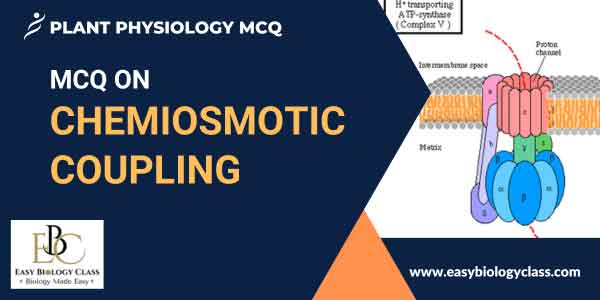Chemiosmotic coupling is the mechanism by which ATP is synthesized in mitochondria and chloroplasts. It involves the movement of protons across a membrane, creating a proton gradient. The energy from this gradient drives ATP synthase to convert ADP and inorganic phosphate into ATP. This is an MCQ on Chemiosmotic Coupling Mechanism of ATP Synthesis.
<<< Back to Plant Physiology MCQ Page
You may also like... NOTES QUESTION BANK COMPETITIVE EXAMS. PPTs UNIVERSITY EXAMS DIFFERENCE BETWEEN.. MCQs PLUS ONE BIOLOGY NEWS & JOBS MOCK TESTS PLUS TWO BIOLOGY PRACTICAL


